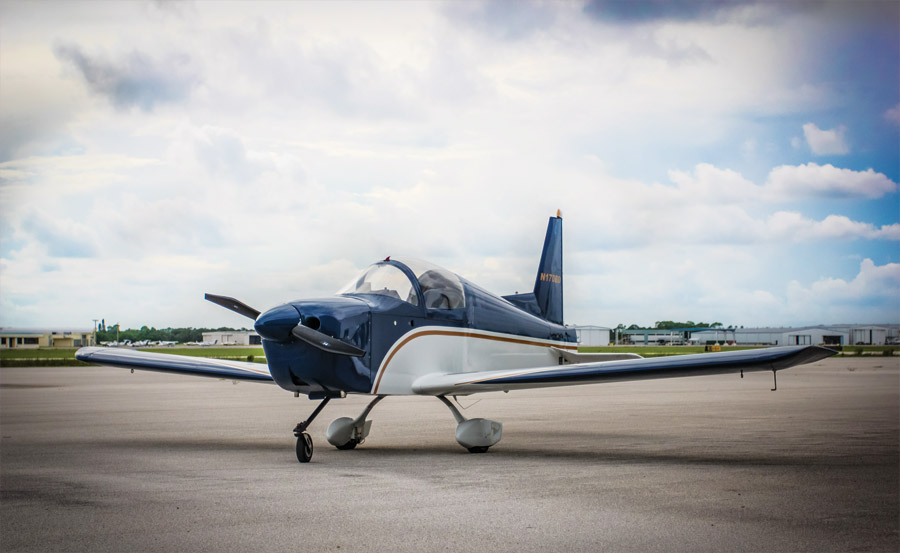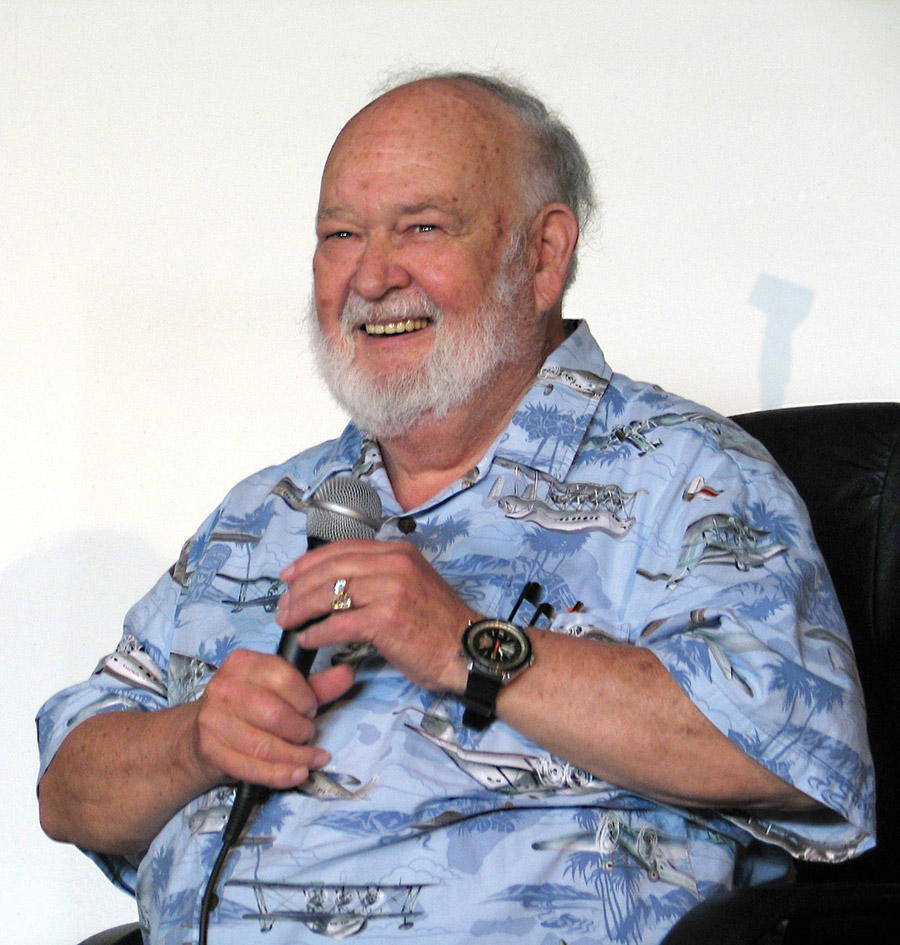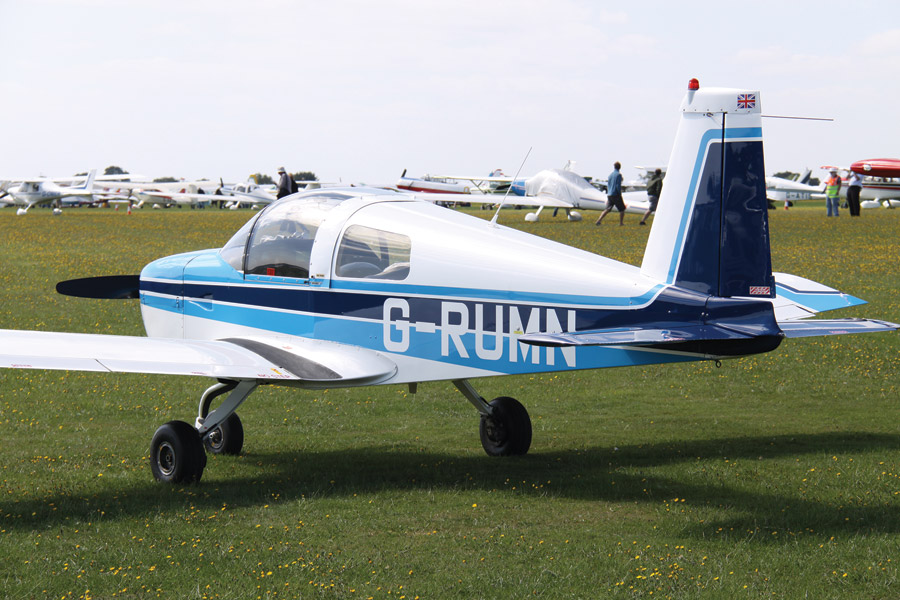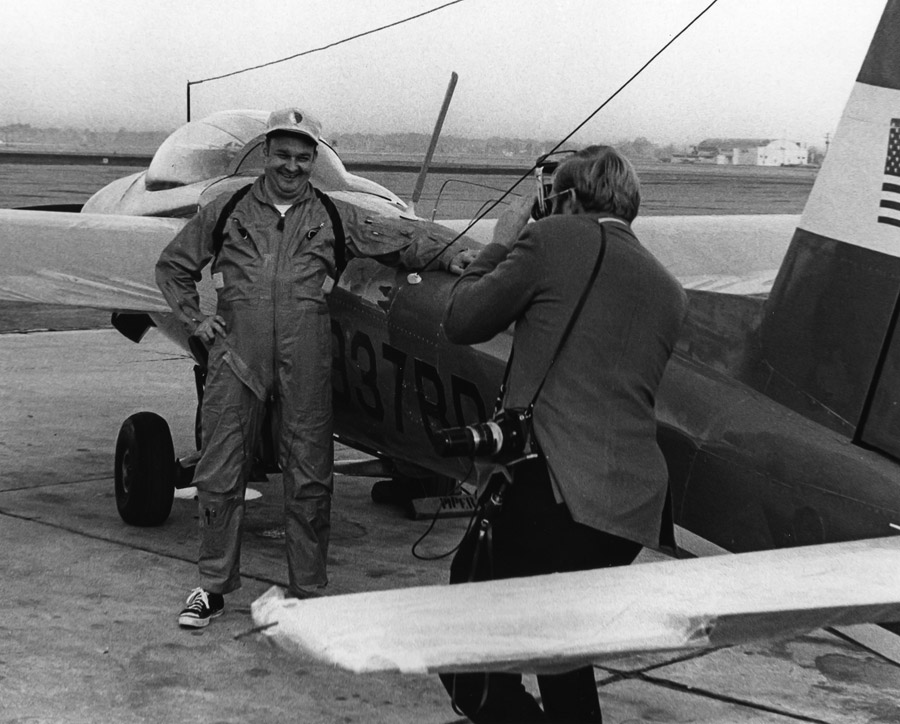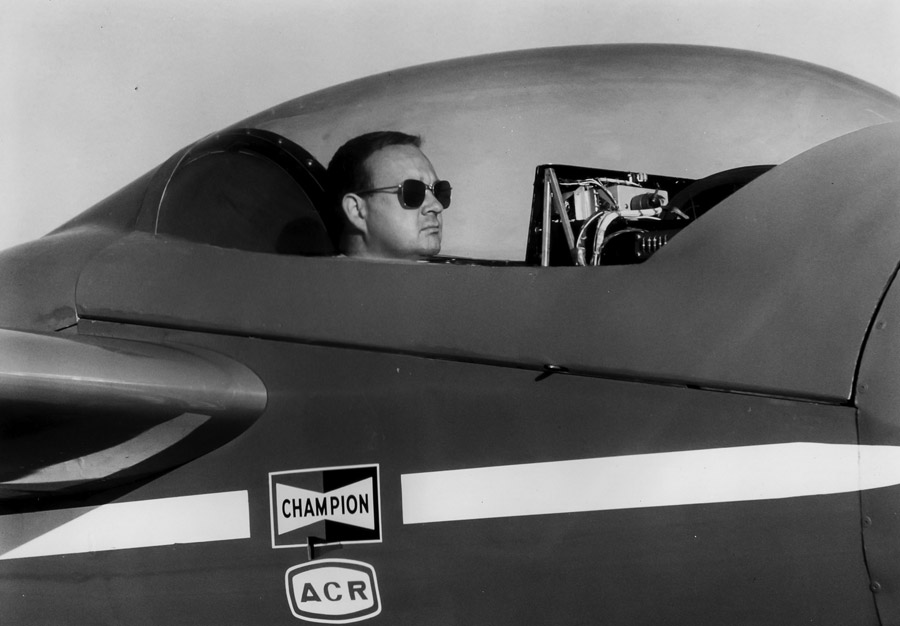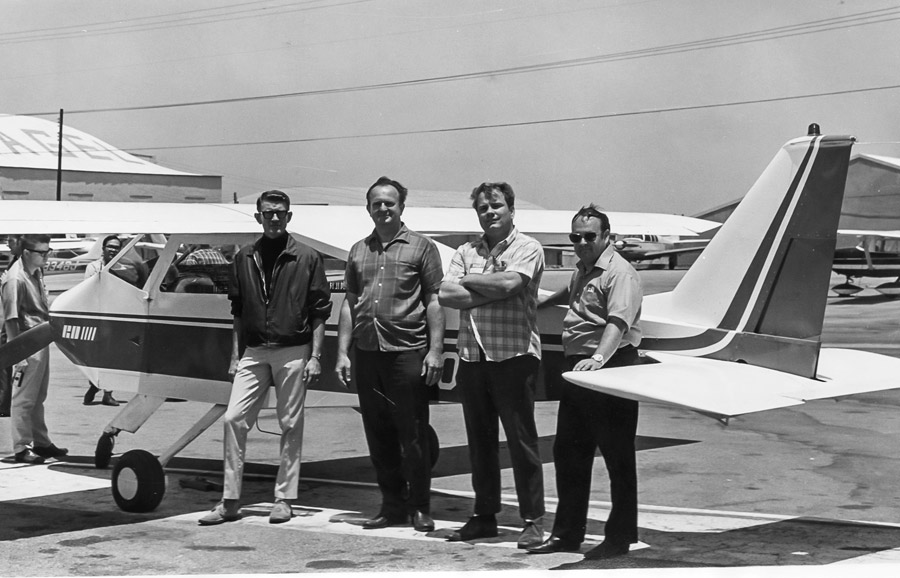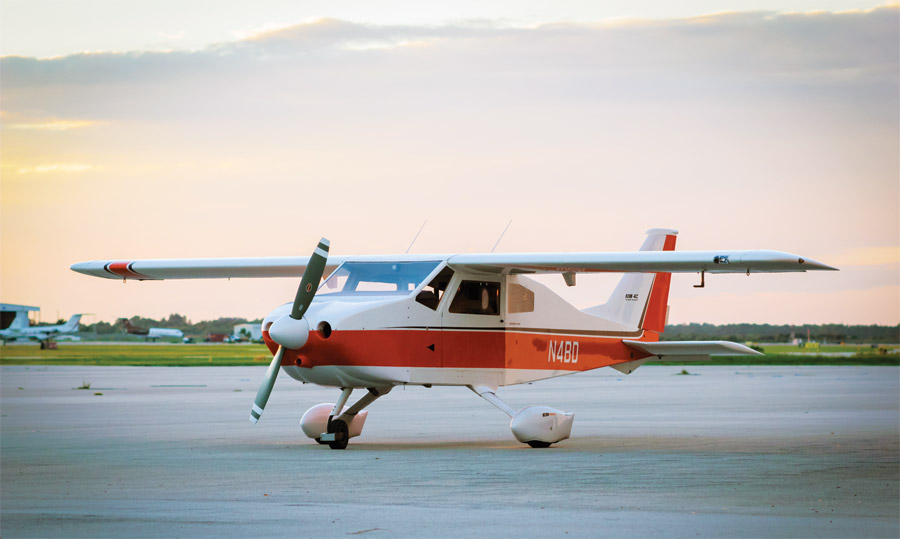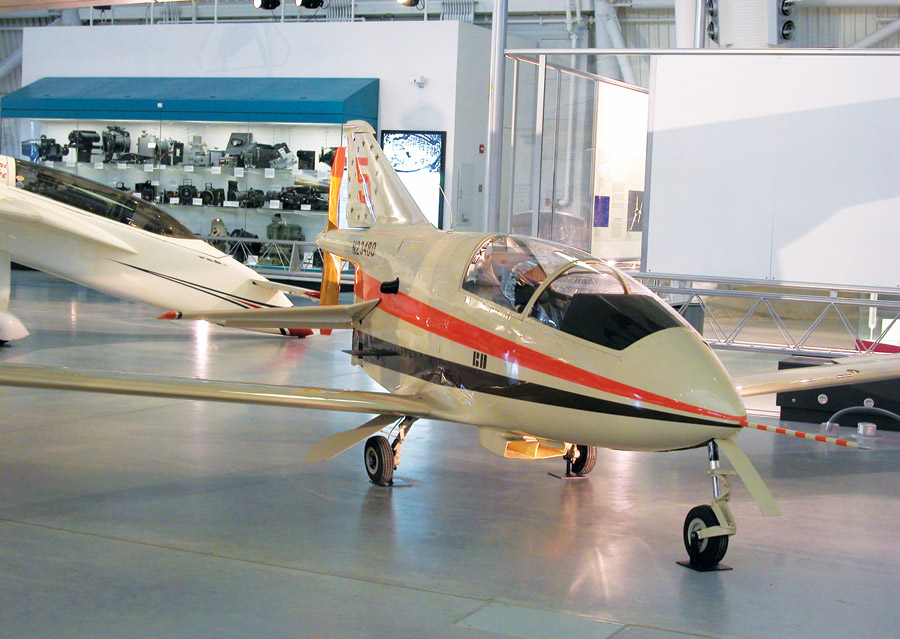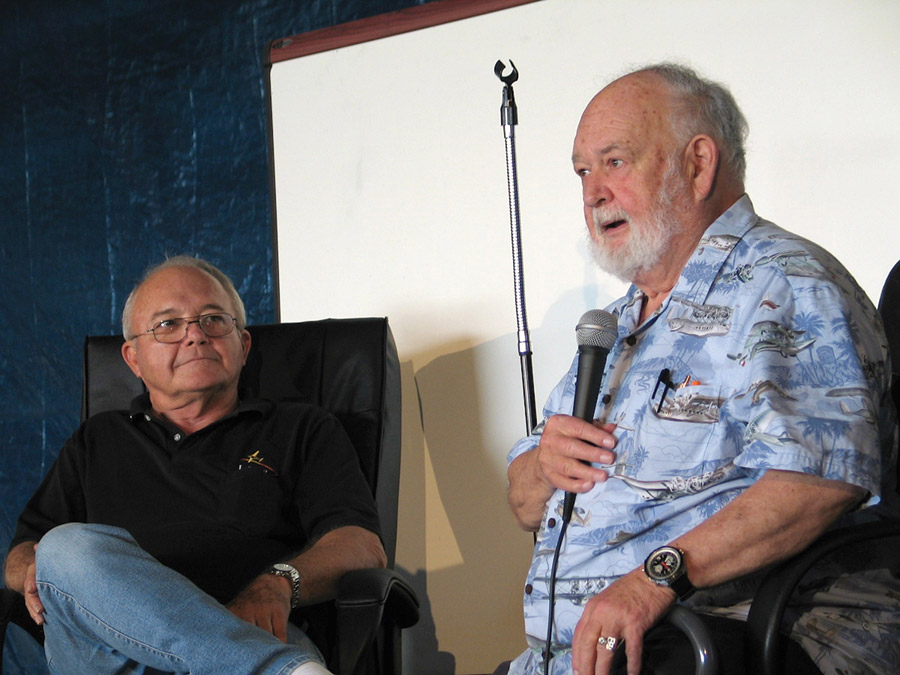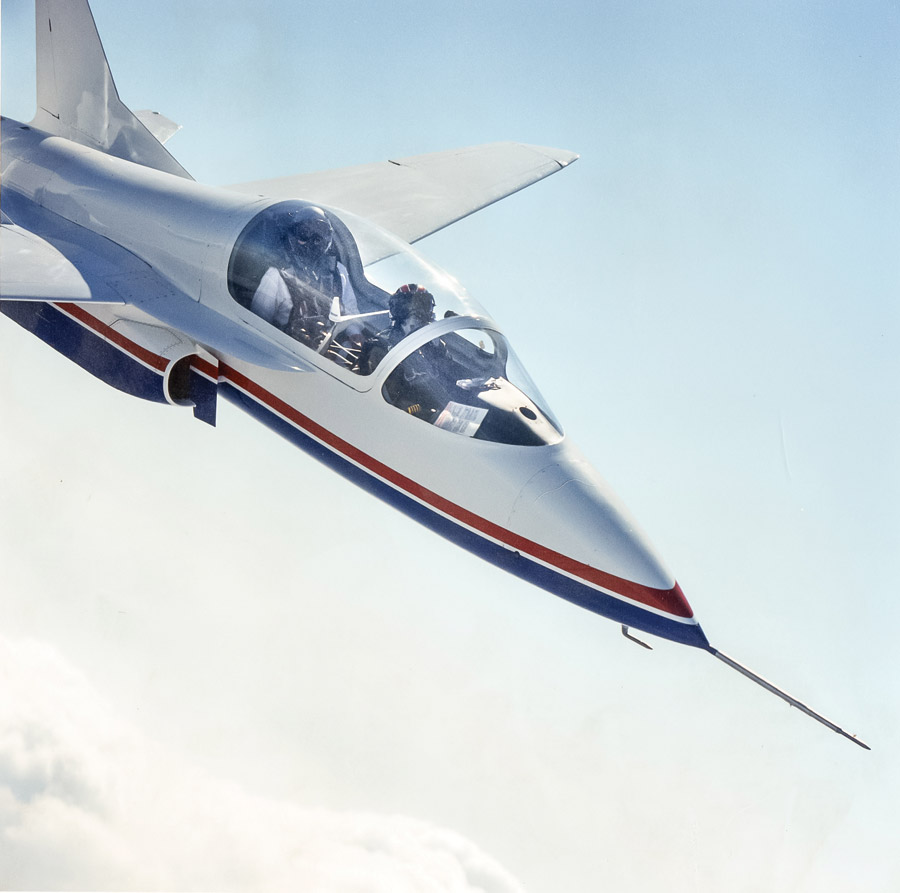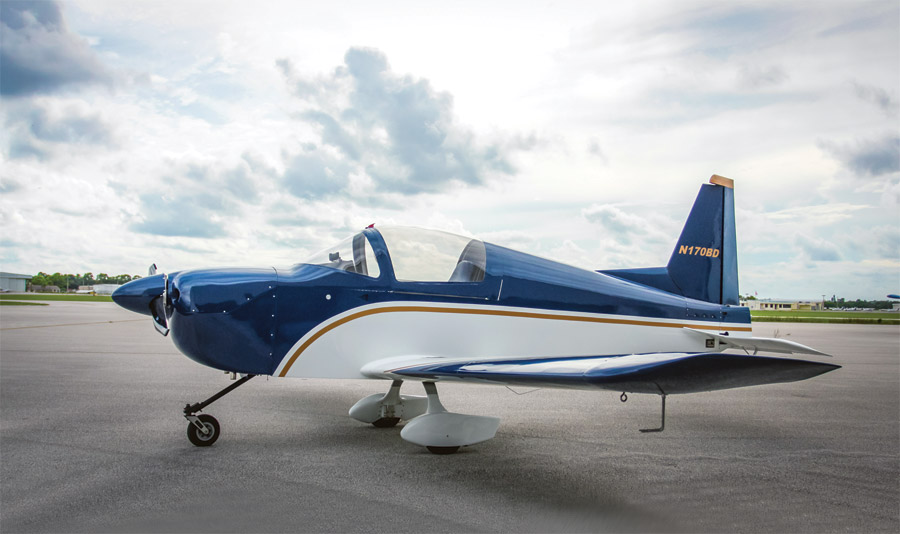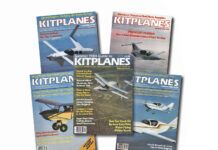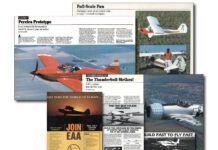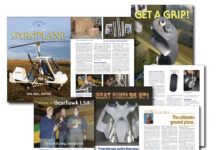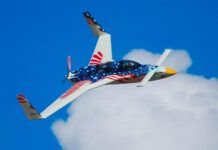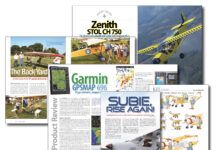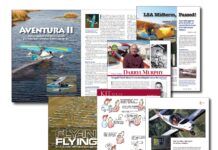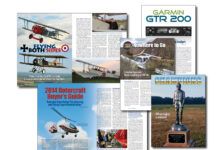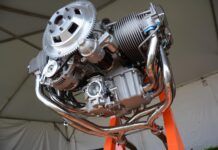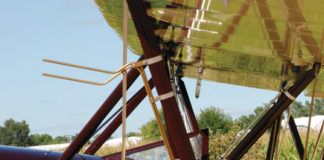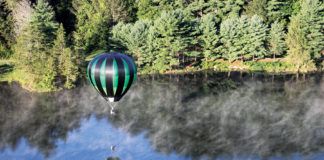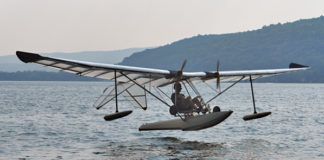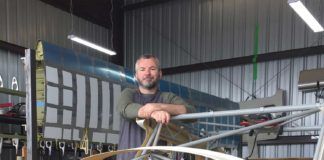Jim Bede Sr. made lots of promises, convincingly, if you ask around, and even delivered on a few of them. His legacy, however, is considerably more than any promise, fulfilled or otherwise, that he ever made.
There are in this world, a few people whose nature is to think big—really big. Whether they are nurtured to this mindset as children by adoring and all-empowering parents or whether they spring from their mother’s loins full-formed and hell-bent on stepping, rolling, heck—hurling themselves off every cliff they encounter in life—I can’t tell you.
This I can tell you: those people are born into this world ready to take risks. Most of them fail miserably, and we, the risk-averse majority, are quick to condemn them publicly, loudly, and with much self-righteousness. There are some risk takers who are humbled by these public shamings. They learn to walk the narrow line and never glance right or left—never to yearn for more. Fewer still are the mavericks who rise again and again, sometimes learning from their failures, until they succeed. And when they do succeed, they bring to the world new and wonderful inventions that we all want. Our world is a safer, more communicative, more fun and infinitely smaller place because of these brave, reckless souls.
The BD-1 evolved into the factory-built Grumman American AA-1. (Image credit: aeroprints.com [CC BY-SA 3.0], via Wikimedia Commons.)
Not a one of those guys lives a perfect life. Let’s take aircraft engineer, designer, and fabricator Jim Bede Sr. as an example. He was one of more than a few classically trained aircraft engineers pumped out of American universities in the 1950s who were being pushed to save the USA from its greatest nemesis: the Soviet menace (do you remember Sputnik?). Bede joined that effort at North American Aviation, where he worked on projects such as the F-4, F-100, and A-3 Vigilante.
BD-1
By 1961 young Bede felt ready for something new. Always a proponent for light aircraft, he partnered with his father and friends Don Keck, Larry Schneider, and Dick Jiminez to produce an airplane that “everyman” could fly. Better than that, he wanted it to be an airplane that everyman could buy. The BD-1 was conceived as a kit aircraft, something few, if any others, were doing (there were plenty of plans for aircraft out there at the time). It was comprised of 385 distinct parts, of which 175 were interchangeable. Those interchangeable parts were key to both its price point (cheaper to manufacture) and the simplicity of its build.
The airplane relied on bonding to fuse its large parts together—something altogether new for light aviation. Bede demonstrated the process to Popular Mechanics writer Kevin Brown around 1964, who marveled at how quickly the structural parts could be set in a jig and then literally glued together with phenolic and epoxy resins. The airplane had a unique tubular spar that was strong, and super-light (for the time) honeycomb aluminum was used for the floor, bulkhead, and cockpit sidewalls, as well as the rear bulkheads. The prototype was flown by Brown for that 1964 article, and he liked its handling characteristics.
Bede planned on having a range of engines available for what he touted as any and everyman’s airplane. Published (forecast) speeds at 65% power ranged from 112 mph to 145 mph. The wings included a quick-disconnect function for home storage. The engine included a swing-away cowling that allowed complete and quick access for the mechanic. It seemed he’d thought of everything.
Beyond production facilities for the aircraft kits, Bede planned an elaborate sales and service center, as well as a flight-training facility at the nearby airport in Springfield, Ohio. It all looked great on paper. So great that investors got onboard early, hoping to take the kit into full production as a 14 CFR Part 23 certified airplane. And then, as is often the case, things got slow. Promises seemed to take forever to fulfill. And they seemed to take more money than first forecast.
In 1965 Fred Lemmon, a Cleveland industrialist, came in and succeeded at taking over the project and forming a new company, American Aviation, which was eventually scooped up by Grumman. The airplane, with a few key changes, was produced without any more Bede influence, as the AA-1 and later at Grumman, with its much loved, more powerful derivatives. Look around—you’ll see Grumman Yankees, Travelers and Tigers still flying.
Bede poses for pictures with his record-setting BD-2, a one-off homebuilt purpose built for efficiency.
BD-2 and BD-4
Not to be discouraged, and still owning a small piece of the company, Bede went back to the drawing board. Soon after the BD-1 was no longer his project, he set several endurance aloft records in his BD-2, a one-off design that looked a lot like a Schweizer SGS 2-32 glider with an engine on its nose. It was, however, much more. The aircraft fuel capacity was 565 gallons. He nicknamed it “LOVE,” an acronym for “Low Orbit, Very Efficient.”
By May 1969 Bede was in Popular Mechanics again; this time Brown was writing about the BD-4 kit aircraft. And again, Brown liked the airplane. The BD-4 was not as sexy as the little fighter BD-1, but it was eminently buildable, ostensibly because of the exquisitely detailed plans that Bede had created for the aircraft. Popular Mechanics liked the airplane so much that it agreed to sell the plans for Bede ($30 a pop back then). It also included some new technologies, including plastic wingskin panels that slipped over the skeleton and were bonded into place, saving the builder hours of riveting or rib stitching. The article cutline reads, “Bede’s newest airplane is the easiest to construct yet. The wings come ready-made and most of the fuselage just bolts together.” Seriously, look it up.
The four-place airplane was booked at 166 mph using a 150-hp engine, according to the article. Handling? Brown again flew a prototype, this one with a 160-hp engine. It made 162 mph cruise and flew like a solid cross-country machine.
What made the BD-4 truly unique, however, was that its components would be shipped to the buyer in seven distinct kits, one at a time, for $2,940, minus the engine. Years later Bede would write about it, “Since the BD-4 was truly the first homebuilt kit aircraft, I was not sure how close a builder would follow the drawings. I wanted the structure to be nearly foolproof for construction. For example, there are many areas where we had more screws than would be required to just meet the structure loads. It is so foolproof that even an aeronautical engineer could build the first one.”
It was a formula that worked, and kits went out the door, providing cash flow for a radical new design that was already in his head—a design that would both make and break him—the BD-5.
BD-5
The 1970s were a different time. Perhaps you lived through them? Do you remember Nixon? Lining up for gasoline? A recession that seemed to last forever? In the middle of all of this, in the little town of Newton, Kansas, an odd sort of phenomenon was happening.
This BD-5B was built by Albert C. Beckwith and Peter K. Graichen. It flew in 1978 with a modified Honda engine. The two flew it nine hours before donating it to the Smithsonian in 1984.
“Employees of Bede Aircraft showed up early and never went home,” smiled stunt pilot Corkey Fornof, one of those employees, remembering. “Bede knew talent, and he brought it to Newton to help him refine the BD-5,” he continued. Who did Bede hire? Do you know a guy named Burt Rutan? How about Boeing test pilot and FAA certification inspector Les Berven? Dan Cooney, Bob Bishop, Deb Gary, Al Thompson…should I stop?
Why were they there? Because Bede, after selling more than 800 of the decidedly homely looking, but solid-flying BD-4 kits (the numbers vary but suffice it to say plenty), had flipped back to his everyman’s fighter idea, and the design prototype he showed up with at the EAA Fly-In the summer of 1971 was making pilots everywhere hot and bothered.
“The BD-5 was just sexy,” said Richard Collins, then editor of Flying magazine, remembering the time well. The little airplane looked just like a mini-fighter, and could be equipped with either a piston engine (pusher prop) or, for those with the moxie, a turbojet (BD-5J).
It was set up for one soul in the cockpit. The control forces on the airplane were light and responsive. Talking about the aircraft’s then unique side stick, test pilot Les Berven wrote, “By decreasing the pilot’s force capability to that available from his wrist, the aircraft and pilot forces are matched; and although the stick forces are very light, they feel absolutely normal. I really believe the side stick is the optimum system for very small aircraft, and I don’t think the BD-5 would be a success without it.”
With a few engineering refinements provided by those capable engineers on Bede’s staff, the airplane flew like a dream, according to the likes of airshow pilots Bob Bishop (he purchased 20 of the jet version), Corkey Fornof, Deb Gary, and writer-pilots Jack Olcott, Richard Bach, and more.
Yet everyone was a skeptic about whether Bede could bring the airplane to market, at least in the press of the day. To counter assertions that the airplane was difficult to fly, the company brought a series of ordinary pilots to the airshow—even a girl!—and had them fly demos in the airplane for the crowd. Even BD-5J owner Richard Bach gave Bede a hard time in print, but he loved the airplane all the same. The crowds at the EAA Fly-In loved the airplane, too, and came out to see it.
“Bede used pure showmanship to sell that airplane,” remembered Collins. “He knew how to project this bubbling enthusiasm he had for his designs, and people went for them.” A BD-5J demo team traveled the airshow circuit showing off the airplane’s maneuverability and performance. People came to airshows to see it and were inspired to learn to fly, hoping just to fly it. Thousands put down deposits of $400 to grab their place in line for a BD-5 kit.
But there were problems. If you ask Fornof, he’d tell you that Bede was no different than any of the other prolific aircraft designers of the 1950s-1970s. “They all, and I mean Beech and Cessna, wanted to continually improve their airplanes…slowing down bringing them to sale,” he explained. But Walter Beech had his wife, Olive Ann, who ran the company and pushed him to clean it up, lock-in a production prototype, and worry about changes later. Clyde Cessna’s wife brought her nephew, Dwane Wallace, in to do the job. Don’t think that they weren’t watching Bede back then, because they were. The bigger manufacturers even quietly used him to consult on some of their own troublesome issues. And if he’d gotten the BD-5’s piston-engine and drivetrain problem worked out before his cash flow ran out, Bede may just have been a force in the light-plane market of the 1980s.
Jim Bede Sr. (right) speaks at a LoPresti First Saturday event. He’s flanked by his good friend and skilled BD-5 pilot Corkey Fornof (left).
Engine and Financial Troubles
Bede was generous with his time and that of his employees, ready to problem-solve for his kit customers. There is no question of that, and they loved him for it. He knew well how to promote his products, too.
Turns out, though, that Bede was not much of a businessman. He didn’t manage the cash flow. He didn’t have anyone effective pushing him to production. He kept refining the airplane, aiming beyond the kit toward taking the aircraft into production, even while he went through engine manufacturer after engine manufacturer trying to find a workable piston powerplant (the jet engine, a 225-thrust-hp Sermel TRS-18-046 turbojet, worked fine). Guys who flew in front of the Hirth engine were apt to tell you that the aircraft equipped with that engine was a really good glider. Even Richard Collins watched Jack Olcott deftly set down the airplane after flying it for a magazine pilot report (he landed it just fine, on airport, by the way) in 1973.
Kits were being delivered, but many were waiting for powerplants, among other parts. The sheer volume of materials Bede suddenly needed was overwhelming for his suppliers. How many kits went out? Estimates are as high as 5000.
An engine did finally come along. “The Xenoah engine, from Japan, a three-cylinder, two-stroke, was fantastic,” remembered Fornof, who flew a BD-5 equipped with it (and standard 40 gallons of fuel) from Newton, Kansas, to Memphis, to Atlanta, to Pensacola, to New Orleans, to Houston, and, feeling a little wary at that point, had the line guy throw in five gallons a side before heading back to Newton, even though he was pretty sure he still had enough fuel in the tanks to get there. Sipping fuel at 1.8 gph at full throttle, it was a sight better than the fuel consumption on the BD-5J, which gave you about 40 minutes of useable flight, with a reserve, according to Fornof. “That engine was just what the BD-5 needed. It was cost effective and the latest technology, everything Jim ever wanted in a machine,” he said. Bede was designing a variable-pitch prop (not a constant-speed prop) that was refined for this engine. It had a takeoff position, high-cruise position, low-cruise position, and feathered position.
Unfortunately, that all came too late to save the company, and a lot of money evaporated, much of it Bede’s personal monies, but plenty of other people’s money, too.
“I was initially angry about losing my deposit,” said R.J. Siegel, these days chief technology officer for One Aviation. “But later on I got to know the man and admire him. I understood that he was this eternal optimist. He always thought that these roadblocks were just another little developmental problem that with time he could fix.”
In 1979 bankruptcy proceedings ended with an FTC decree stating that Bede would not take deposits from anyone for any product for a period of 10 years. He honored that settlement. He was not, however, idle. During the decade he created a couple of highly efficient land vehicles with his cousin, and began conceptualizing and sketching out something—wait for it—altogether different.
BD-10J
Just a few weeks past the 10-year mark, in 1989, Bede resurfaced with another radical aircraft design. This time Bede started with a proven engine, the General Electric CJ 610 turbojet producing 2950 pounds of thrust, and essentially pulled from his basket of knowledge honed at North American Aviation, to create an airplane he hoped would be every pilot’s dream. It sure looked dreamy, like a mini F-15. Its performance? Once again, Bede wowed them. William Garvey wrote in Popular Mechanics that “Bede expects he can deliver a BD-10J kit, less engine, for around $160,000 USD.” The airplane’s projected specifications blew Garvey out of the water, but he was looking at it on paper, and there it said it was designed to fly at Mach 1.4. At the time three aircraft were under construction in Mojave, California, and were meant for the airshow circuit, initially.
A few years later, in 1994, Aviation Week writer William Scott said in a pilot report that went four pages long that it flew like a fighter, the airplane hurtling from standing still on the runway to 29,000 feet in six minutes flat. “The airplane was an absolute delight to fly, but most general aviation pilots will definitely need some training and practice before they will feel comfortable with the BD-10J’s attention-getting performance,” Scott wrote. Interviewed in the article, Bede admitted that the airplane would “fill a niche.” By that time the idea of selling an airplane as complicated as the BD-10J was beginning to look to be very difficult.
“The FAA probably could have worked better with Dad on figuring out how to certify these jets as homebuilts,” Jim Bede Jr., by then an adult with his own construction business, remembered. Fornof felt the same way.
The FAA, though, was not the only problem with the BD-10J program. It had teething issues, particularly with its tail, and demanded a fix. Bede created one, but after yet another crash in the mid-1990s, the NTSB report put to question whether the fix was enough. Soon the aircraft’s pedigree became muddied; there was the Peregrine, the Fox-10….Interest from the Canadian and Portuguese militaries never panned out. And by 1997 Bede Jet went bankrupt.
Jim Bede Jr. and the BD-17
Jim Bede Sr. did have a couple of other smaller aircraft in development in the 1990s, but until Jim Bede Jr. began working with his dad to manage Bedecorp, the business side of, well, the business, didn’t go so well. “I think Dad really hated the business of aviation,” he said. “I’ll be honest—that strained our relationship.”
Bede Jr. found out quickly that he loved the aviation business. “It was so entirely different from construction.” Of course, it isn’t a business for people who don’t understand that you might have to lose money to develop your product, either. Bedecorp felt the squeeze with the rest of light aviation during the deep recession of 2008-2012.
“We lost money, but we got through it,” remembered Bede Jr. “We all struggled through, with some companies not selling a single kit in a year. But we kept coming back to AirVenture and working our booth.”
One of the reasons Bedecorp got through it was because Jim Bede Sr. was still developing interesting airplanes, this time in the realm of LSAs. The BD-17, looking eerily like its big brother, the BD-1, was first announced in 2000, and like its older sibling, consisted of few parts. It entered flight testing in 2003 and proved to be a sweet-handling, easy-to-fly airplane.
“I took one flight and I was hooked on the little one-place,” said Corkey Fornof. “I watched two guys build it in about 40 hours, and then everything about the airplane was designed for easy maintenance,” he continued.
Bill Koleno of Titan Aircraft remembers Jim Bede Sr. in those lean years. “I started helping Jim out machining parts and doing math for his designs…we had a lot in common. He likes to make stuff, like me. He’d come by with a roll of blueprints and we’d talk about designs, such as the BD-11, a 4-place BD-10, I think; and the BD-25, a 4-place little twin jet,” he recalled. “His designs all had key hallmarks: that honeycomb aluminum and a tubular spar.”
Koleno was heartbroken when his friend died suddenly last July of an aneurysm. “Jim had a huge heart and was such a family man. He cared about aviation, and he paved the way for so many other kit builders,” he said. “What I liked about him was he owned up to his mistakes—he never hid from the crowd. And he was always there for his builders, and even other kit manufacturers, like me,” he continued.
Jim Jr. misses his father, too. AirVenture 2015 will be forever memorable for him because of how many people came up to him with stories about his father.
“My dad went all in with aviation,” he said. “It’s not like he ever kept back a penny for himself. He lost everything. But he’s not alone. Kit aircraft manufacturing is littered with stories about bankruptcies,” he continued. “As part of remembering Dad, we’ve started a foundation. We take abandoned kits back, refurbish them, and we are now donating them to STEM programs at schools for the students to build as part of their education. So far we’ve located 20 kits, and we’ve got a couple going out the door already,” he said. He’s excited when the kids write to the program, telling him why they want to build an airplane. It gives him hope for general aviation.
Moving Forward
Today Bedecorp sells the BD-17L (an ELSA), right next to the BD-4c, an improved version of the BD-4, and the BD-6, a single-place version of the BD-4 designed in the 1970s. It was working on a two-place BD-22L last spring. All of the airplanes can be purchased as several smaller kits, or one complete kit, and all of them can be built at the company’s builder-assist facility at St. Lucie County International Airport in Fort Pierce, Florida, if the buyer chooses to get help with assembly. Jim Bede Jr. hopes the company can continue his father’s legacy through the solid general aviation designs that are eminently buildable. Everyman’s airplane, really. Just as Jim Sr. would have had it.

